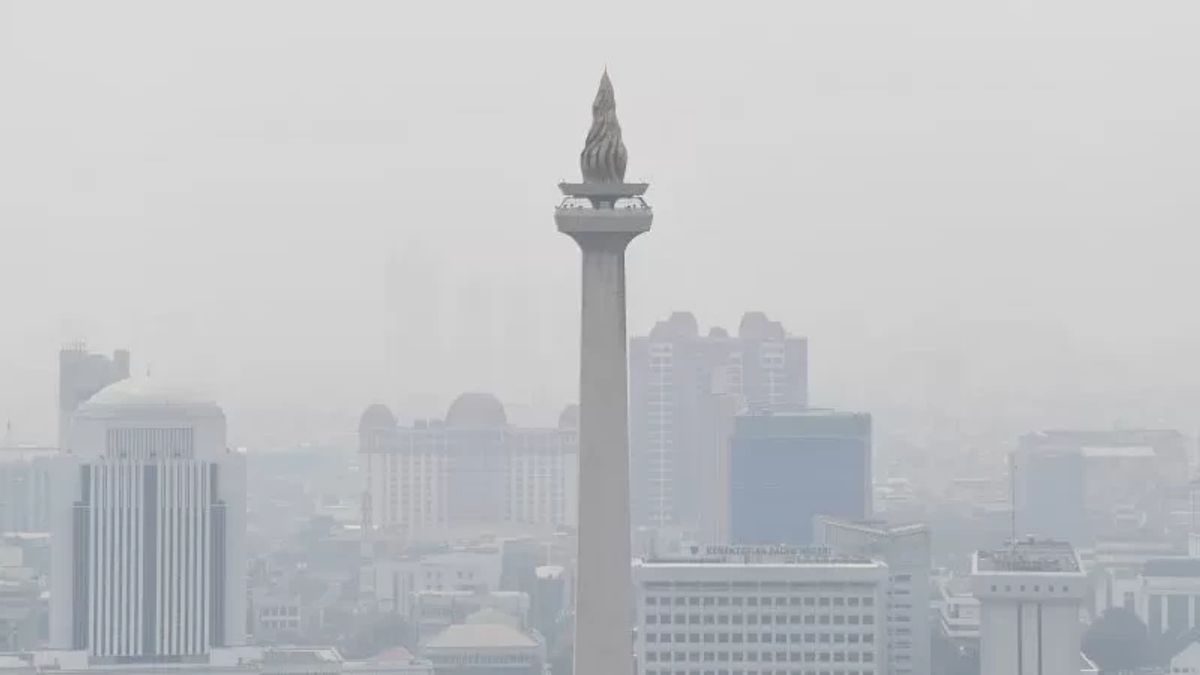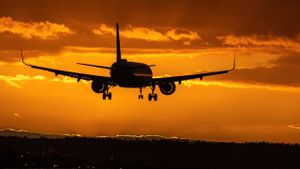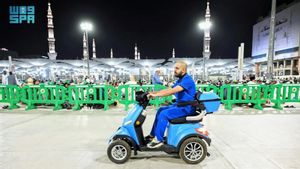JAKARTA - Member of Commission D of DKI Jakarta Regional Representative Council (DPRD) Justin Adrian Untayana questioned the DKI Provincial Government's supervision of the recent poor air quality in the capital city.
Judging from the website of the air quality monitoring agency IQ Air, Jakarta is included in the top 5 cities with the worst air quality in the world. Jakarta's air quality index this afternoon is at 148, which means unhealthy for sensitive groups.
Adrian's view is that the DKI Jakarta Environment Agency currently appears not to be firm in following up on the impact of high levels of air pollution. Reflecting on the coal dust case in Marunda, until now local residents still feel the pollution.
"I am very doubtful about the Environmental Service. There was the coal dust case. After the incident, it was busy first, then action was taken. Even though they also have a budget to carry out supervision, which I think is doubtful about its implementation," said Justin when contacted on Tuesday, June 13.
In fact, the Environmental Service should already have enactment parameters related to pollutant waste problems, starting from measurement to completion.
If previously the Environment Agency noted that one of the sources of high air pollution came from industrial areas, Justin questioned how the DKI Provincial Government would take action against these companies.
"How much enforcement? Is the enforcement still within the limits of reprimand or what? I think there are many factories that have crossed the threshold and so far there has been no strict enforcement," he said.
The poor air quality in Jakarta is again in the spotlight. Since May 15 2023, the air quality index in Jakarta has never been less than 100. This means that the air quality in Jakarta is not healthy. Numbers 101-200 indicate the level of air quality can affect the health of humans or animals with sensitive body conditions.
SEE ALSO:
Meanwhile, particulate matter (PM2.5) is an air quality pollutant, dust particles measuring 2.5 microns. PM2.5 sources, according to IQAir, are very diverse, usually coming from motor vehicle exhaust fumes, power plant fumes, industrial processes, and cigarettes.
The Sub-Coordinator of the Environmental Monitoring Group for Pollution Control and Environmental Damage for the DKI Jakarta Environment Agency, Rahmawati revealed a number of factors causing the worsening of air quality in the Capital City.
According to Rahmawati, air quality could deteriorate periodically. Usually, Jakarta's air will experience an increase in air pollutant concentrations when entering the dry season, namely from May to August.
"The monthly average concentration of PM2.5 in April 2023 was 29.75 µg/m³ to 50.21 µg/m³ in May 2023, but this concentration was still lower compared to May 2019 during normal conditions which was 54.38 µg /m³," said Rahmawati in her statement, Thursday, June 8.
However, the increase in pollutant concentrations will decrease again when entering the rainy season from September to December. This can be seen from the trend of PM2.5 concentrations from 2019 to 2023.
"Rain will help the decay of pollutants floating in the air, so that when entering the dry season, this (pollutant decay) does not occur," he said.
Then, the low wind speed in Jakarta causes stagnation of air movement, so that air pollutants will accumulate. It can also trigger the production of other air pollutants such as surface ozone (O3), whose presence can be indicated from decreased visibility.
Then, high relative humidity can cause the appearance of an inverse layer near the surface. The impact of the existence of the inverse layer causes PM2.5 on the surface to become suspended, unable to move to other layers of air, and results in an accumulation of its concentration which is measured in the monitoring device.
Not only that, Rahmawati also did not deny that the high air pollution in the capital city is affected by emissions from industrial areas, including from buffer zones.
"For SO2 pollutants, the biggest source comes from the industrial sector. Sources of emissions in one area will affect other areas due to the movement of pollutants due to wind patterns that carry pollutants from one location to another, causing the potential for increased concentrations in that location," he said.
The English, Chinese, Japanese, Arabic, and French versions are automatically generated by the AI. So there may still be inaccuracies in translating, please always see Indonesian as our main language. (system supported by DigitalSiber.id)
















